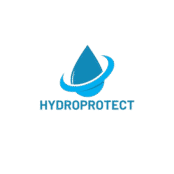Understanding Hotmelt Roof Waterproofing
Hotmelt roof waterproofing is quickly becoming a top choice for hall and warehouse owners, developers, and property managers seeking reliable and efficient roofing solutions. Its ability to provide a robust, long-lasting waterproof barrier makes it an unrivaled contender in the market of roofing technologies. Hotmelt technology, though sophisticated, can be explained in straightforward terms that highlight its key benefits and practical uses.
The process of hotmelt involves applying a molten bitumen-polymer mix to a roof surface, which, upon cooling, forms a seamless and highly durable membrane. This technology stands apart for its sustainability, rapid installation, and excellent performance in adverse weather conditions. By understanding its application and benefits, stakeholders can make informed decisions about adopting this roofing technology.
Advantages of Hotmelt Roof Waterproofing
Adopting hotmelt roofing offers several significant benefits that appeal specifically to those involved in large-scale construction projects, including:
Durability and Longevity
One of the standout features of hotmelt roofing is its exceptional durability. Due to its seamless application, the risk of leaks is substantially minimized. This technology can withstand severe weather conditions and heavy use, providing peace of mind to facility owners who rely on their roofs to protect valuable assets. This longevity reduces the need for frequent repairs and replacement, making hotmelt a cost-effective solution over the lifespan of a building.
Adaptability to Complex Roof Designs
Hotmelt systems are incredibly versatile and adaptable to various roof designs, including those with intricate or unusual shapes. The ability to mold and conform to the substrate makes it an ideal choice for buildings with complex architectural features. This flexibility ensures a perfect fit every time, facilitating innovative design without compromising on waterproofing performance.
- Perfect for roofs with limited load-bearing capacities.
- Can accommodate roofs with multiple penetrations or awkward angles.
Eco-Friendly and Energy Efficient
Emphasizing sustainability, hotmelt roofing systems can be made from recycled materials, contributing to environmental conservation efforts. Additionally, the reflective properties of certain finishes can enhance a building’s energy efficiency by minimizing heat absorption and reducing cooling costs.
- Reduces carbon footprint due to longevity and minimal maintenance.
- Improves building insulation, leading to reduced energy consumption.
Comparing Hotmelt with Traditional Roofing Methods
Hotmelt roofing holds distinct advantages over traditional methods, making it an attractive alternative for various construction projects. Comparing its features with those of conventional roofing methods helps property managers make informed choices.
Seamless Application vs. Layered Roofing
Traditional roofing often involves layered application, which can increase the risk of leaks and seams. In contrast, hotmelt roofing offers a seamless installation process that negates these risks while providing a continuous barrier against water ingress. The result is fewer maintenance concerns and a reduced likelihood of water damage.
Installation Speed and Efficiency
Installing traditional roofing systems can be time-consuming and labor-intensive. Hotmelt roofing, owing to its relatively quick application process, offers significant time savings during construction. This efficiency benefits project timelines and reduces labor costs, an aspect highly valued by developers and property managers.
Successful Implementations of Hotmelt Roofing
There are numerous success stories of hotmelt roofing applications across large industrial and commercial projects. These case studies demonstrate the practical benefits that this technology offers in real-world scenarios.
Warehouse Facilities
Several warehouse facilities have adopted hotmelt roofing due to its ability to withstand heavy operational demands. The robust nature of hotmelt systems ensures that even under constant exposure to logistical operations, the roofing remains intact and watertight.
- Minimal disruption to daily operations during installation.
- Resistant to chemicals and environmental stressors frequently encountered in warehouses.
Commercial Halls and Retail Spaces
Hotmelt roofing is equally advantageous for commercial halls and retail spaces, where visual appeal and structural integrity are paramount. Its seamless finish complements modern architectural styles while safeguarding the interior environment against moisture and leaks.
- Enhances aesthetic appeal with a variety of finish options.
- Provides dependable waterproofing to protect merchandise and interior designs.
Summary
Hotmelt roof waterproofing is undeniably transforming the landscape of roofing solutions with its enduring durability, adaptability, and sustainability. For hall and warehouse owners, developers, and property managers, this method offers an efficient, cost-effective solution that outperforms traditional roofing in many key areas. Whether your priority is environmental responsibility, structural integrity, or aesthetic values, hotmelt systems provide a compelling answer, ensuring long-term protection and peace of mind. By embracing hotmelt technology, you’re investing not only in the present reliability but also in the future sustainability of your facilities.

